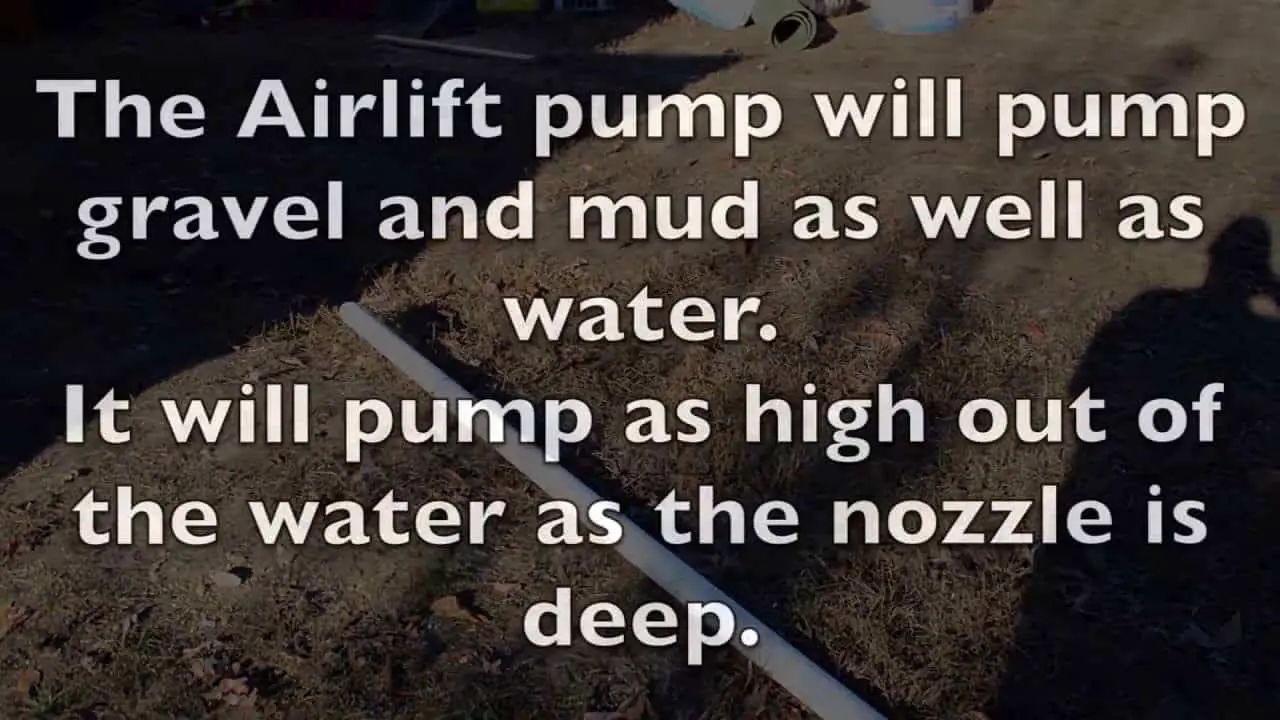
I decided to make an experimental airlift mud pump to clean out my old pond.
I have a spring fed pond that has been abandoned and allowed to silt over. Brush has grown around it and clogged it with rotting leaves. It has gotten to the point that in sections the silt is so thivk that grass has grown over. You cannot tell how soggy it is. It is not uncommon for me to be weed eating and step wrong and sink to my waist in think mud.
Swampland Breeds Mosquitoes
This causes a danger. Additionally, it is a breeding ground for mosquitoes so I have been looking for options. I can’t afford to hire someone with a dredger. My backhoe can’t get to the area. I was at a loss.
I was playing on youtube and found a guy that uses airlift pumps for outdoor hydroponics. it uses a cheap air pump instead of a more expensive electric pump, and because it is air powered and not electric it is safe around water. Down the internet research hole I went.
In looking at how it worked I learned that gold prospectors use dredges to suck up mud, recovery divers also use similar systems to recover boats that are lost under tons of sand.
Can the process work for thick mud? I see videos of Koi pond owners using similar systems all the time on a smaller scale. The lack of videos means one of two things – no one has thought of it, or it doesn’t work.
Will a Airlift Pump Work?
I cobbled some pipes to make my Experimental DIY Airlift Mud Pump, the most expensive pieces being the fittings. It took me less that 15 minutes to build.
I put my diesel air compressor in the truck and drove down the hill to the pond. Now right now Tennessee is under a state of emergency due to extreme dry conditions and we are under a total burn ban. I did not know until I went out to my pond how dry it was. It has really thickened the mud, and if I was careful I could walk slowly on the thick dried crust that formed.
This made the experiment much more difficult.
An airlift pump will lift waterlogged debris the same distance up and the nozzle is held under the water. the pond was 10 feet deep, so I bought a 10 foot section of pipe to make my airlift. If it was wet enough for me to push the nozzle 10 feet down under the surface, it would shoot mud 10 feet into the air.
It Worked, But the Wetter the Better
The ground was too dry to do that, so it only went down about 3 feet – which made it hard for the mud to make its way out the other end of the pipe.
Instead of a geyser of mud, I got more of an old faithful eruption…
As the pressure build up, the mud would spurt out. It made a neat sound, as I got to where I could estimate the time between spurts.
What was happening is that it sucked the mud from around the nozzle and had to wait until more wet mud oozed down around the pipe end.
I cannot wait until the weather changes and I have lots of wet mud to work with. Once I get some time to experiment with nozzle configurations and get a good working model I will scale up to 4 inch pipe.
Navy divers use 9 inch pipe and have to be careful as the suction is so strong it can pull body parts into the tube.
The Thief Strikes Again
I made a bigger set of pipes, and bought a roll of trash pump hose, and more airline. I also redirected the creek to fill the marsh with a little more water. However, when I went back to try again, the thief had cut into my shipping container and stole my air compressor.
